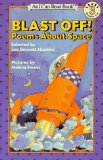If you have been following this blog very long, you know I am crazy about meteor showers. As a child, the most spectacular natural event I ever witnessed was the Northern Lights, but meteor showers were a close second. The best part is, you don’t need any special equipment to see the show.
Although we tend hear the most about certain meteor showers, particularly the Perseid and the Geminid showers, several different meteor showers occur throughout the year. For example, from December 28, 2013 through January 12, 2014 is the Quadrantid meteor shower. Astronomers are predicting peak activity on the early morning, Friday January 3, 2014.
(Starry Night photograph by Ronald Carlson obtained from PublicDomainPictures.net)
If you want to try viewing the Quadrantid meteor shower, plan on visiting a place that will be dark and allow an unobstructed view of the sky towards the north. The meteors should originate between the Big Dipper constellation and the North Star (see EarthSky for a diagram).
1. Remember, porch and street lights can fade out even the brightest meteors.
2. Remind your children there may be several minutes between sightings. In the wee hours of the morning it can be hard to be patient.
3. Blankets and lawn chairs that allow for viewing in a prone position help prevent neck strain and keep chilly viewers warm.
Can’t view outside? NASA will be streaming the Quadrantid meteor shower live.
Check to see if you might also be able to spot the International Space Station passing by.
________
Related reading:
How the Meteorite Got to the Museum by Jessie Hartland –reviewed at Wrapped in Foil
 Meteors are pieces of space flotsam that burn up in the atmosphere. Meteorites are similar, except they are large enough to remain intact and impact Earth. This picture book follows the Peekskill Meteorite, which struck a car in Peekskill, New York on October 9, 1992.
Meteors are pieces of space flotsam that burn up in the atmosphere. Meteorites are similar, except they are large enough to remain intact and impact Earth. This picture book follows the Peekskill Meteorite, which struck a car in Peekskill, New York on October 9, 1992.
Age Range: 6 – 9 years
Publisher: Blue Apple Books (October 8, 2013)
ISBN-10: 1609052528
ISBN-13: 978-1609052522
Disclosure: This book was originally obtained for review electronically from Edelweiss, although I finished the review using a copy from my local public library. Also, I am an affiliate with Amazon so I can provide you with cover images and links to more information about books and products. As you probably are aware, if you click through the highlighted title link and purchase a product, I will receive a very small commission, at not extra cost to you. Any proceeds help defray the costs of hosting and maintaining this website.
___________________________________________
If you would like to share, we would love to hear if you are able to view this meteor shower. You can leave a message in the comments or on our FaceBook page.







